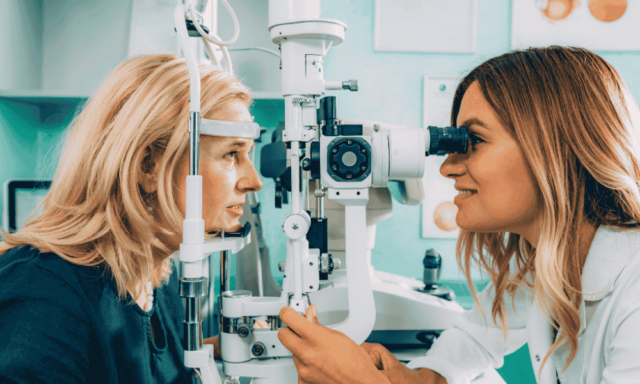
Technological advancements and a growing emphasis on preventative care and the importance of routine eye exams have led to major strides in optometry in recent years. But several challenges continue to fly under the radar, quietly impacting both patient outcomes and the future.
When we say these issues are overlooked, we mean underacknowledged by the general public and underprioritized by policymakers, not overlooked within the dedicated optometry community. Consider each item on this list an area that deserves further research or targeted advocacy efforts.
Diagnostic biases in underserved populations
AI has revolutionized diagnostic accuracy, but its effectiveness has been inconsistent across diverse populations. Implications continue to be significant, particularly if optometrists as a collective group aren’t up for navigating the challenges with care. For example, current studies show that certain AI models used to detect glaucoma may underdiagnose younger females and overdiagnose older Black patients due to deep learning model bias. Here’s another consideration, one pointed out by Easy Anyama, OD, and Lori Grover, OD, PhD, FAAO, in their excellent summary of AI in optometry to date:
Comparisons of AI models with doctors often miss the fact that doctors have an intrinsic population bias to the area they practice in. Most providers do not see patients in all 50 states. AI models, however, are often created with the intent of national distribution and application, potentially missing regional differences. (Source: Navigating AI in optometry: A balancing act of innovation and ethics)
Anyama and Grover further note that addressing these issues will require a deep understanding of AI and a commitment from optometrists to navigate these complexities responsibly. We recommend reading the entire piece linked above.
Public perception and scope of practice
Many folks still view optometrists solely as vision correction specialists. The problem with this perception is that it ends up influencing insurance reimbursement and legislative decisions.
The general public and even healthcare policymakers don’t fully understand the implications for access, cost, or patient outcomes. If anything, they’re more likely to view the whole thing as some sort of professional turf war between ODs and ophthalmologists.
But building stronger interdisciplinary partnerships with physicians and other specialists can help raise awareness of optometry’s full scope of practice. And advocacy efforts focused on public education and legislative reform will help secure broader practice rights.
In terms of policy, here’s the key point: “It can’t happen the year of the bill dropping. It has to be an ongoing process where a legislator gets to know the optometrist and trusts them as the source they would go to for any eye-related issue that may come through the legislature,” says Heather Gitchell, OD, in “Why You Should Fight for Scope Expansion.”
Recommended read: Stay abreast of the latest states pursuing scope expansion in 2025
Managed care limiting practice autonomy
Insurance companies and managed care organizations like to dictate which labs you can use, what frames you can sell, even how much you get reimbursed, which can ultimately cause a range of problems that impact your clinical decision-making and patient options.
Similar to the scope of practice issues, this is a known gripe among ODs, but not something the general public or lawmakers fully grasp unless they’re closely involved in the industry. On top of that, the managed care system (and insurance for that matter) is so dense and confusing — which makes it harder to rally widespread support or garner the kind of public outrage that can help move the needle.
Legislative efforts are underway to protect practitioners’ autonomy, but more advocacy is needed to spur change here. The American Optometric Association continues to push for reforms that prioritize patient care over insurer mandates. If you have the bandwidth, you might consider engaging in grassroots advocacy on these issues, as well.
Rising educational costs and workforce shortages
Browse any student message board and you’ll quickly see the complaints. The increasing cost of optometric education places a heavy financial burden on new graduates. The problem it creates is twofold:
- Heavy debt discourages graduates from working in rural or underserved areas, where salaries are lower but the need is already greater (and growing).
- Whenever education costs more, it limits socioeconomic diversity in the profession, reinforcing disparities in who becomes an OD and where they practice.
This is one of those brewing issues that’s hard to tackle because it’s not yet an emergency; it’s not an immediate crisis, but a looming one. The aging OD workforce combined with an aging U.S. population will mean an increased need for care. On paper, the national number of ODs may look sufficient, but you have to look at regional shortages and access disparitie to see the full picture.
New graduates might explore federal programs that offer student loan forgiveness in exchange for serving in underserved regions. Or check state-specific programs; many states run Health Professional Loan Repayment Programs to encourage providers to serve in Health Professional Shortage Areas.
As an established optometrist, you can support the next generation through mentorship programs, residencies, and practical financial advice. And not to bring up advocacy again, but advocating for policies that reduce educational costs and increase funding for optometry schools can help address the root of this challenge.
These challenges may not always make national news headlines, but their impact on both patients and practitioners is immense. These are the areas in which to be proactive if you want to secure a more resilient and prosperous future.



